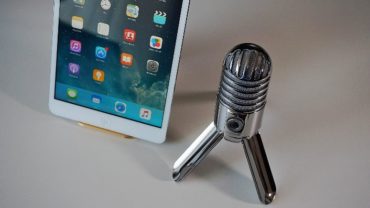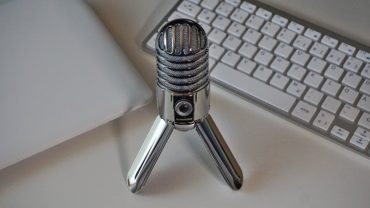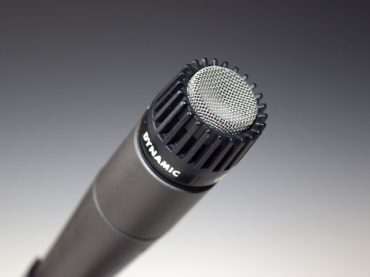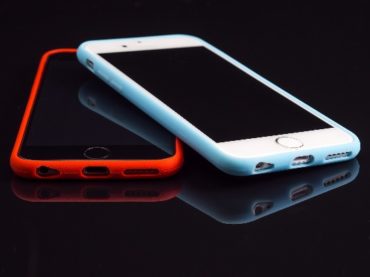Introduction to Podcasting
More than 100 million US residents of all ages listened to a podcast in 2016, a number that represents an 11% rise over 2015. While the movie industry is still booming, 5 times as many people listen to podcasts as opposed to going to a movie. In the US, the largest demographic of podcast listeners are 25 to 54 years old, a segment of the population with money to spend.
Over 4 million adults regularly listen to podcasts in the UK. In technology-friendly countries around the world, podcasts are becoming more and more popular. However, industry experts agree that the golden age of podcasting has yet to be realized. This means now is the perfect time to get in on a growing marketing method that makes you more of a real person to your audience than a static website or blog.
To Blog or to Podcast? That Is the Question!
Speaking of blogs, there are an estimated 115,000 English-speaking podcasts, and 180,000 podcasts worldwide. There are thought to be between 175 and 200 million blogs. That means it is literally 1,000 times easier to dominate your niche with a podcast than a blog, since there is significantly less competition. Additionally, podcasts let you connect with your audience in an engaging way a text-based blog never can.
 In this guide on podcasting for beginners, you will discover the ins and outs of podcasting, the benefits of this type of tool for getting the word out about your business as opposed to other marketing methods, and the basic equipment you need to get started. You will learn that you probably already own everything you need to begin podcasting at the bare bones level. We will give you some recommendations for gear, for both the entrepreneur shopping on a tight budget, and for those who have enough money to afford top-of-the-line equipment.
In this guide on podcasting for beginners, you will discover the ins and outs of podcasting, the benefits of this type of tool for getting the word out about your business as opposed to other marketing methods, and the basic equipment you need to get started. You will learn that you probably already own everything you need to begin podcasting at the bare bones level. We will give you some recommendations for gear, for both the entrepreneur shopping on a tight budget, and for those who have enough money to afford top-of-the-line equipment.
You will find that a quality podcast does not have to mean spending a lot of money. We will show you exactly how to record your podcast episodes, the art of interviewing guests, how to get yourself interviewed by other podcasters, and how to launch and monetize your show. Let’s get started by outlining exactly what podcasting is.
What is Podcasting?
Back when the iPod MP3 player was born in late 2001, it was immediately popular. The iPod is a portable media player, and when users started broadcasting episodic audio files which could be consumed on the iPod, the podcast was born (podcast is an amalgamation of the words iPod and broadcast). Quite simply, podcasting is …
“The act of recording and distributing audio files in an episodic format.”
Podcasts are not one and done interactions with your audience. They are so powerful for beginning or veteran marketers because if someone listens to one of your podcast episodes and enjoys it, they almost always return to listen to more content. With the prices of laptop computers and quality microphones (the only 2 physical pieces of hardware you need to run a podcast) continually dropping, this method for reaching out to your audience is now available to just about any business owner, big or small.
What makes podcasting different from simply recording an audio file and putting it on the web is its subscription feature. When someone subscribes to your podcast, they are either alerted when you launch a new episode, or your episodes are automatically downloaded to the iTunes or Stitcher account of that individual. They can be listened to on a myriad of electronic devices, saved for later, enjoyed live, and transferred to portable players which do not have an Internet connection.
The Benefits of Podcasting
As you can see by that definition of podcasting, this form of marketing benefits from the fact that once someone subscribes to your podcast, they have access to all your old episodes, and your new episodes when they are produced. Podcasting technology offers on-demand and targeted content that people are looking for. It’s free for the listener, can be enjoyed on the go on a smart phone or tablet, and allows you to connect with your audience so much better than text-based media.
Another benefit of podcasting is that it creates instant and unimpeachable levels of credibility and authority. Podcasting also gives you a global reach, and there are multiple ways to monetize your podcast (more on this in the last section of this guide on podcasting for beginners). One often overlooked benefit is the fun factor. Once you figure out the physical act of recording and publishing your podcast episodes, you can have a lot of fun with your show.
Podcasting is easy as well. You can run a show from your smartphone, or just about any computer with a microphone. It levels the playing field, putting you on even ground with the biggest businesses in the world. Finally, don’t forget the statistic mentioned in the introduction.
There are roughly 1,000 times more blogs than podcasts, which means if you launch a podcast, especially in a micro-niche, you have a much better chance of connecting with your audience than on your blog.
Contrary to what you may believe, it doesn’t take much to get started podcasting.
Podcasting Hardware & Software Needed
We mentioned in the introduction that it really does not take a lot of expensive equipment to launch and run a podcast. You can share your message with the world, sell products and services, promote your business and build your reputation as an industry leader with a very limited amount of hardware. The software you’ll need for podcasting is inexpensive, even free in some cases, and easy to use for even a technology-challenged entrepreneur.
If you haven’t started a podcast by now because you are using the complexity of the required hardware and software as an excuse, you have just run out of excuses. Here is really all you need to podcast.
- Computer
- Microphone
- Recording Software
- Hosting Provider
 Your computer is needed to access the hosting provider where you store your episodes until you upload them to iTunes, Stitcher or some other podcast publishing platform. You have to record your voice or that of whoever will be hosting your podcast, and that is what a microphone is for. Recording software is needed to create the audio files which you will edit and turn into podcast episodes. Finally, a podcast hosting provider replaces your web host for storing media files, which makes your website faster, allows you the ability to store larger files and more files, and makes for a better experience for your listener.
Your computer is needed to access the hosting provider where you store your episodes until you upload them to iTunes, Stitcher or some other podcast publishing platform. You have to record your voice or that of whoever will be hosting your podcast, and that is what a microphone is for. Recording software is needed to create the audio files which you will edit and turn into podcast episodes. Finally, a podcast hosting provider replaces your web host for storing media files, which makes your website faster, allows you the ability to store larger files and more files, and makes for a better experience for your listener.
In the future, you may want to add a mixing board to fine-tune your show, but honestly, some of the most popular podcasts use nothing more than a computer, microphone, recording software and a hosting provider. Those are the only 4 components you need to crank out a very good podcast that has audio quality which rivals the professionals. Now let’s take a look at some budget-friendly recommendations on gear, as well as some higher-priced options, and the software you will need.
Basic and Advanced Podcasting Tools for Creating a Quality Show
Computers
If you are an online entrepreneur or own another business and you market your services online, you probably own a desktop or laptop computer. Any modern computer will work, so you don’t need to rush out and spend several thousand dollars on the latest and greatest PC or laptop.
Microphones
- The ATR2100 mic is both affordable and able to record high quality audio. Any podcasting guide or coach will tell you that if money is a consideration, buy the ATR2100 dynamic microphone. It comes with both USB and XLR outputs, and in head-to-head tests with microphones costing hundreds of dollars more, this affordable mic is often the winner for best sound quality. Expect to pay between $65 and $70.
- The Blue Yeti is a condenser microphone, can be found in podcasting studios large and small, and costs between $125 and $150. It is a quality mid-level microphone that has an old-school radio broadcasting look, and it connects to your computer with a standard USB cable.
- A good mid-level microphone for podcasting is the Rode Procaster Broadcast Dynamic Vocal Priced at around $200, the Rode P
 rocaster includes an internal pop filter so you don’t have to purchase that accessory. It produces quality sound, and is used by professional broadcasters.
rocaster includes an internal pop filter so you don’t have to purchase that accessory. It produces quality sound, and is used by professional broadcasters. - If you want the best, you’re going to have to spend some money, and that means purchasing the Heil PR40. At more than $325, this professional level dynamic microphone is the go-to choice of podcasting veterans.
The Difference between a Condenser and Dynamic Mic
Some people will tell you a condenser microphone is the way to go, and others will swear by a dynamic mic. The bottom line is this – condenser mics are more sensitive than dynamic models. Many podcasters find they prefer condenser microphones, because they produce a detailed, crisp, clear sound. However, condenser microphones pick up all sound in the general area, so if you are a recording from home or some other possibly noisy environment, go with a dynamic mic.
Beginners should just buy an ATR2100 and get started. Condenser microphones require what is known in the industry as phantom power. This simply means they need to be hooked up to a DC electric power source. Dynamic mics do not require anything more than hooking up to the USB slot on your computer. Dynamic mics like the ATR2100 produce less “hissing”, have a rich, warm sound quality and produce smooth audio.
Don’t take a lot of time choosing a mic. Grab one and get going!
When some podcasters get started they just use the built-in microphone in their laptop or desktop PC. This is never a good idea. Since you can get a quality microphone for very little money, and high-quality audio is an absolute must, don’t trust your reputation and business perception to a built-in computer microphone.
Upgrading Your Gear
If you have a microphone and computer, you are ready to go. However, there are a few things you can purchase to make your podcast more professional, and easier on yourself. If your microphone does not come with one, you will probably want to purchase a boom stand or desktop mic stand. A pop filter is so named because it keeps pops and plosives out of your recordings. Plosive is the word used to describe a popping sound that most people make when they pronounce a word that starts with a ‘B’ or a ‘P’.
Pop filters are inexpensive, so beginners may want to consider picking one up. Most podcasters serious about what they are doing purchase a headset that has closed ear covers. This allows them to listen to someone they are interviewing without being distracted by outside noises. A mic stand, pop filter and headset are not needed to get started, so don’t let these additional purchases delay the recording of your first podcast episode.
 The Mobile Phone Option
The Mobile Phone Option
Thanks to free apps that work on both iPhones and Androids, it is possible to record podcast episodes from your smart phone. Cinch, Google Play Music, Pocket Casts, Ipadio, AudioBoo and DoggCatcher are some of the top applications used to record audio from your smart phone. Avoid this type of podcast if at all possible. The microphone on your smart phone is just not the quality you are looking for to record really great audio. These applications will work in a pinch when coupled with a headset, but this should be a last-gasp option.
Choosing a Mixer
A mixer helps you change a lot of audio metrics. You can raise or lower timbre, bass, dynamics and other qualities of audio signals. This is absolutely an optional item. If you choose a microphone that has only an XLR connection, you will need a mixer.
The Behringer Xenyx Q802USB will set you back about $80, and is a good starter option. The Mackie Onyx 820i 8-channel Premium FireWire Recording Mixer has many more features and capabilities, and will run you approximately $450. The Mackie PROFX8 8-Channel Mixer is a mid-level option, priced at about $225.
Software
Great, you have your laptop and microphone and you are ready to start recording. All you need now is some quality software known to produce great audio. You may have the greatest content in the world, a fine-tuned and efficient sales funnel and a true desire to help others, but if your audio is bad, no one is going to listen to your podcast. This is where the right software comes in, and here are a few popular recommendations.
- Audacity (Mac, Windows or Linux)
- Adobe audition (Mac and Windows)
- GarageBand (Mac)
- Podcast Producer (Mac)
- WinAmp (Windows)
A lot of podcasters conduct interviews over Skype. This is a wonderful option if you cannot personally meet up with someone you are interviewing. If you use Skype for this reason, you will need ECamm Call (Mac) or Pamela (Windows). They allow you to save audio and video files obtained through Skype.
Another type of software you are going to need involves hosting. Archive.org is the most popular free media hosting choice for podcasters, but we recommend spending a little money and going with LibSyn or Blubrry. The amount of tools and features you get for as little as $12 a month makes that affordable purchase a no-brainer.
To recap, at bare minimum, you need…
- A computer
- A microphone
- Podcast recording software
- A podcast hosting provider
Creating Your Podcast Episodes
One wonderful thing about podcasts is the fact that the more episodes you put out, the more your subscriber list grows. If you and a competitor each have a podcast and you have 2 or 5 or 10 times the number of podcast episodes of available for your audience, you have a great chance at earning more market share than that competitor. However, no one wants to listen to disorganized garbage.
That means planning.
You should at the very minimum be considering publishing 1 episode every week. You should also plan your topics of conversation for 1 year out. This means coming up with 52 topics or guests for your podcast episodes. Start brainstorming ideas. Get out a sheet of paper and write down everything related to your business. Then look at those topics, keywords or guest speakers as they relate to problems your audience has.
 If you have a dog training business, you wouldn’t simply have an episode titled “Training Your Dog”. You definitely want to talk about dog training, but you want to reach your audience on an emotional level. An episode which covers “How to Keep Your Puppy from Chewing up Your Expensive and Sentimental Possessions” is a title and topic that connects your business to emotional, problem-solving benefits.
If you have a dog training business, you wouldn’t simply have an episode titled “Training Your Dog”. You definitely want to talk about dog training, but you want to reach your audience on an emotional level. An episode which covers “How to Keep Your Puppy from Chewing up Your Expensive and Sentimental Possessions” is a title and topic that connects your business to emotional, problem-solving benefits.
It is a good idea to write down more than 52 ideas for episodes. This is because some of them are not going to pan out. Once you have your list, cut it down to 52 episodes, or however many you plan on producing each year. Now you are ready to create an outline.
Every podcast needs to have an introduction and a close, which in podcasting circles is known as an outro. You need to know exactly what you are going to talk about in between your intro and outro. Outline exactly what aspects of your episode topic you’re going to cover. If you are interviewing someone, provide them with this list. Studies show the most popular length of podcast episodes across multiple markets is 25 to 45 minutes. Structure your outline accordingly.
Practice Makes Perfect
Now you need to start practicing. Record a test episode, one that you will not be publishing. How do you sound? Are there any background noises you need to take care of? Are there words you have difficulty pronouncing, and you need to avoid? Successful podcasters who sound professional and comfortable behind the mic all started out as practicing beginners. You may find you need to record 5 or 10 or even more test episodes before you get the hang of the process.
Just remember that practice makes perfect.
Get started. You may sound absolutely horrible, unprofessional and scared when you start out. Over time you will become comfortable with the process, and your episode quality will improve. John Lee Dumas is one of the most successful and notable podcasters today, and he says that when he goes back and listens to his earliest episodes, he is amazed that anyone ever came back to listen. He now makes millions of dollars each year from his EntrepreneurOnFire podcast, because he didn’t let inability or not knowing what he was doing stop him from getting started.
Launching Your Podcast
Now that you have a few podcast episodes in your pocket, it is time to share your content with the world. It is highly recommended to have a minimum of 3 episodes before you launch. The more episodes you have when you present your podcast the better. Imagine how a listener would feel if they heard your initial podcast episode, thought you were the greatest thing in the world, and then had no more episodes to listen to! That person may leave, never to return again.
Building an audience means you are going to have to add your episodes to podcast directories like iTunes, Stitcher and others. Here are a few of the top podcasting directories where you want to publish your content.
- Google Play
- iTunes
- Stitcher
- SoundCloud
- Spreaker
- iHeartRadio
The best way to get listeners is to publish great content that solves real problems in the lives of your audience. You also want to include important keywords and phrases in your episode titles, during the episode itself, and in your transcripts. This boosts the probability that people looking for what you are talking about can find you.
Begin promoting your podcast to your email list before you launch. Advertise your podcast on your blog or website. Spread the word on social media, and consider paid advertising as well. You can offer a free gift to anyone that shares your podcast episodes with their social media followers. There are literally hundreds of ways you can mark your podcast, free and paid, so get out there and start driving awareness. One great way to instantly build your podcast subscriber list is to get interviewed on another podcast.
Podcast Interviews
You will find once you get started podcasting that the industry is a very tightknit group of individuals. Big and small podcasters truly enjoy helping each other. The big names remember when they were just getting started, and many are more than happy to provide free advice. Those podcasters that have been around a while are constantly seeking new ideas for content, and this means you can get successful, established podcasters to interview you and spread the word about your show.
Reach out to those podcast publishers that have established massive followings in your niche. Find out a way that you can help their audience. Create some free, valuable tool and offer to provide it to a podcaster’s list of subscribers in return for an interview. Nail down one big-timer that agrees to interview you, and you can dramatically grow your subscriber list and spread the word about your business overnight.
You should definitely be interviewing others as well. This keeps you from running out of ideas for podcast episodes. It also expands your reach, as you begin to establish contacts in your market or niche. Here are a few podcast interviewing tips that the pros use.
- Ask open-ended questions. This means don’t ask questions which can be answered with a simple yes or no.
- Take notes while you are interviewing someone. This often times reveals possible content for a future episode, and great questions you can ask your current or future guests.
- Truly listen, and sound like you care. Never mail in a performance. You must be emotionally invested in your podcast episodes, in your audience, and in your guests.
- Conduct an email, Skype or personal interview before you attempt to record your episode. Rehearse questions and ask for suggestions from your guest.
- Establish a routine. Get your interviews to follow a repeatable format. This has been proven to lead to more subscribers, since they always know what to expect, regardless who you are interviewing.
- Keep water handy. The last thing you want to do is develop a dry throat and scratchy voice in an interview.
- Avoid from providing a candid reaction all the time. Your friends might not mind if you say cool or awesome frequently, but your podcasting audience will.
- Make sure you know all relevant details intimately. Misspelling or mispronouncing the name of your guest or her business does not look very professional.
- Ask your audience what you should be asking or talking about in your future episodes. This gives you questions that are relevant to your audience, can help you come up with ideas for podcast episodes, and shows your audience that you really care what they think and feel.
- Finally, listen to your interview episodes after you have published them. This is a great way to become better at your craft.
Making Money from Your Podcast
Smart podcasters are constantly finding new ways to make money from their shows. Here are a few proven ways to monetize your podcast.
 Use It to Build Your List – You probably have been beaten over the head by Internet marketers that repetitively say you must be building a list. Collecting a list of email newsletter subscribers is still the easiest and most cost-effective way to market your business. You can advertise your podcast to your email list, and use your podcast to grow that list as well.
Use It to Build Your List – You probably have been beaten over the head by Internet marketers that repetitively say you must be building a list. Collecting a list of email newsletter subscribers is still the easiest and most cost-effective way to market your business. You can advertise your podcast to your email list, and use your podcast to grow that list as well.
Sell Your Products – At some point you will want to sell your own products and services. Your podcast subscribers like and respect you, that is why they keep tuning in to new episodes. This provides a warm audience that will be receptive to you marketing your products.
Affiliate Marketing – This is one of the easiest ways to make money online. You recommend products and services you believe in. The companies you recommend pay you a commission when someone purchases something from them. You don’t have to stock physical products or deal with customers, you simply act as an affiliate for that company, collecting commissions when something is sold.
Sponsorships, Partnerships – Once you can show that your podcast has a healthy number of regular listeners, which you can tell by looking at the number of episode downloads you have, you can sell advertising spots on your podcast to sponsors. The biggest podcasts make tens of thousands of dollars per month on sponsorship revenue.
Give Podcasting Lessons – Once you get the hang of recording and publishing a podcast, why not teach others to do the same thing? You can become a podcasting coach, and charge other entrepreneurs for your experience and knowledge.
Sell Your Podcast – If your show becomes popular enough, and you want to head off in some other direction with your business, you can sell your podcast. What you are really selling are your subscribers and the brand your podcast has created.
Boost Your Content With Transcripts – Providing transcripts of your episodes is a great way to create free content for your website. It helps the search engines understand what your website or blog is about, and also improves search rankings for keywords and phrases relative to your industry. You can inexpensively hire someone from Fiverr.com or Freelancer.com to create a transcript of your podcast episodes. These can be used as list-building giveaways, published on your blog, and made into e-books.
Recommended Further Reading
 Podcast Launch: How to Create, Grow & Monetize YOUR Podcast e-book (includes 15 video tutorials, currently free to Kindle Unlimited subscribers, also from John Lee Dumas)
Podcast Launch: How to Create, Grow & Monetize YOUR Podcast e-book (includes 15 video tutorials, currently free to Kindle Unlimited subscribers, also from John Lee Dumas)- How to Podcast: Four Simple Steps To Broadcast Your Message To The Entire Connected Planet … Even If You Don’t Know What Podcasting Really Is by Paul Colligan
- Podcasting for Promotion, Positioning and Profit – How to Generate Free Leads, Traffic and Sales by Partnering with iTunes by Kris Gilbertson
- Introduction to Podcast Technology: Discover the Essential Tools and Techniques You Need to Record, Produce, and Launch Your Podcast by David Power
- 100 Great Podcasting Tips: From 100 Great Podcasters by Gary Leland and Travis Littig


